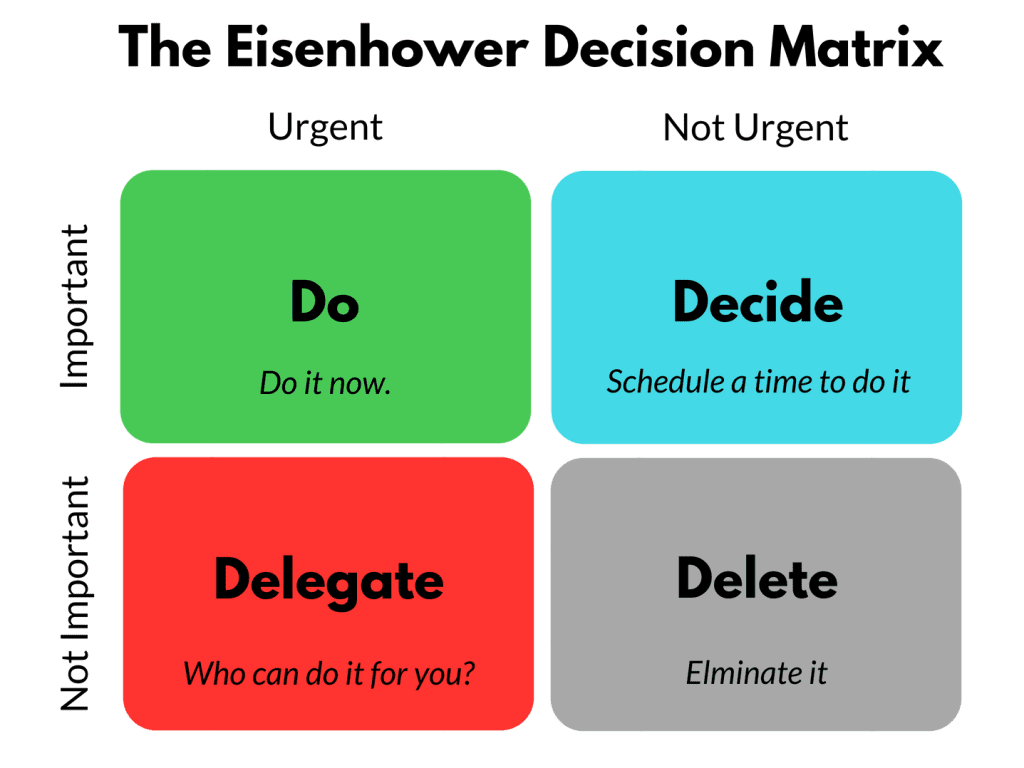Bootstrapping How to Start a Business: Challenges and Solutions
Starting a business is a thrilling yet challenging journey. This guide provides practical solutions to common startup hurdles. We cover everything from business identification to financial management and scaling.
Topics covered in this article
- Identifying the Problem
- How to Find Your Customers
- Building Brand Awareness
- Managing Your Time Effectively
- Hiring the Right People
- Managing Workflow
- Knowing Your Competitors
- Managing Your Finances
- Scaling Up Your Business
- How to Navigate the Challenges of Starting a Business
- Using Mentorship to Your Advantage
- Overcoming Limited Resources
- Startup Challenges and Opportunities Summarized
- FAQ About Startup Challenges
Starting a business is a dream for many individuals. However, it can be challenging and overwhelming at times. From identifying the problem you want to solve to managing your finances and scaling up your business, there are several hurdles that you may face along the way. But don't worry! In this blog post, we will help you navigate through the challenges of starting a business. We will cover everything from finding your customers and building brand awareness to hiring the right people and managing workflow effectively. Additionally, we will answer some of the frequently asked questions about startup challenges, such as overcoming limited resources and using mentorship to your advantage. So, let's dive in and explore how you can start your own successful business!
Identifying the Problem
Image source: builtin.com
Starting a new business comes with numerous hurdles, but there are ways to overcome them successfully. To navigate these challenges, identifying the problem your business is solving and understanding its benefits for customers is crucial. By conducting market research and analyzing data, you can identify potential problems or gaps in the market that need attention before your competitors do. Customer feedback provides valuable insights into areas for improvement or new opportunities that you may have missed otherwise. Seeking advice from industry experts, mentors, or other successful entrepreneurs when facing challenges can also help steer you in the right direction.
Here are some ways you can get started with finding a problem you could provide a solution to:
- Start with an industry you have a natural interest in or one that you think you could profit from.
- Find the top 5 competitors in that industry and organize the reviews and complaints about their goods/services. You will find a way to make a better product that you can offer.
- Use ChatGPT to ask what market leaders in your industry are underutilizing. You may find there is a trend, technology, or distribution channel that you could fill the gap with.
- Find 5 people who might be ideal customers and ask them questions about what you want to offer or about the good/service that they use to see if there are any issues you can fix.
- Find Ex-employees of your competitors and ask them what they would do to fix the problem.
With a solid business plan in place that targets your specific audience based on market research analysis and a sustainable growth model strategy that focuses on long-term goals instead of short-term gains only will help you achieve success gradually.
Harvard Business School has a great article about how to identify problems to solve here.
How to Find Your Customers
Image source: physicsworld.com
To succeed as a startup, finding your customer base is critical. The initial step in this pursuit is identifying your target audience and understanding their needs. While social media and online marketing are great ways to reach potential customers, you should not overlook networking opportunities or word-of-mouth referrals. Additionally, promotional offers like discounts can both attract new customers and retain existing ones. By incorporating these strategies into your marketing plan, you'll be in a better position to grow your small business effectively.
Here are some seemingly obvious but tried and true methods for finding your first customers:
- Ask people know to try your good/service, maybe for free or maybe paid; either way, you may be surprised even if they are not your target audience.
- Incentivize your network with referral kickbacks or free trials.
- Create content about the industry you have your business in. Could be behind the scenes, facts, research, or entertainment.
- Attend events where you can present your business.
- Flea markets, farmers markets, tradeshows, Facebook Marketplace.
- Post the busy on directories and classifieds.
- Good old cold outreach. Pick up the phone, and send DMs/emails or letters.
Fun fact about sending direct mail to customers:
According to Ballantine, a direct mailing company, "The response rate to direct mail pieces is 3.7%, as opposed to 2% mobile, 1% email, 1% social media, and 0.2% internet display."
Building Brand Awareness
Image source: frontify.com
Establishing a startup is no cakewalk! One of the most common startup challenges that entrepreneurs face is building brand awareness. The biggest challenge here is to get your business's name out there and establish a robust brand identity. To make your mark in the market, you must create a website and social media profiles, attend industry events, and partner with other businesses or influencers. This not only helps in consistent branding but also aids in building trust with potential customers while increasing brand recognition. Advertising through PPC campaigns and sponsored content is another great way to boost brand awareness, which will put you in a better position than your competitors.
The branding development process can happen within a day, though typically 2-8 weeks, depending on how robust you plan to make the brand. As general advice for new businesses or startups or, more importantly, for new business owners, don't spend more than a month on branding your first company. You will change your mind and tweak the brand over the years, so your initial efforts will be wasted. Get something that looks and sounds nice to present to your target audience to see if your business is desirable first before spending the resources on building the "perfect" brand that no one has heard of.
As an aside, building brand awareness takes time. While there is no perfect science, most experts tend to say that it takes about 5-10 years before your brand achieves recognizability status in your target market.
Shopify has a great tutorial on how to start your first brand.
Managing Your Time Effectively
Image source: newscientist.com
As an entrepreneur starting a new business, you are faced with numerous challenges that require your attention. One of these challenges is managing your time effectively. In today's fiercely competitive market with limited resources, it's important to stay on top of things like your workload and the need to hire the right employees at the right time for sustainable growth. Effective time management strategies, such as setting priorities in chronological order based on a good marketing plan and a well-established business model, can go a long way in helping you reach your goals while maintaining a work-life balance.
It's also important to find ways to keep yourself motivated and stay focused on the task at hand. Using tools like calendars or apps for payroll or tracking cash flow can help you do just that. Networking on social media platforms like Twitter or LinkedIn or attending industry events are great ways to build brand awareness and establish yourself in market research while building relationships with potential customers.
Start your day with the hardest tasks first!
Research by Kellogg School of Management at Northwestern University by KC Diwas, Bradley Staats, Maryam Kouchaki, and Francesca Gino concluded that tackling the hardest tasks of the day first is better in the long run compared to doing the easiest ones first. Maryam was quoted saying, "...avoiding hard tasks indefinitely also cuts off opportunities to learn and improve one’s skills. It’s not in the interests of the individual, the group, or the organization in the long run,” she says. “That learning part is super critical.” Doing easy work does not progress your goals that much and gives you a false sense of completion. By the time you are ready for the hard tasks, you may feel fatigued.
Hiring the Right People
Image source: thrillophilia.com
Finding and hiring suitable employees is one of the most common startup challenges that entrepreneurs face. Hiring the right people is crucial to achieving long-term success as it ensures that your team members are aligned with your business goals. One of the best ways to overcome this challenge is by drafting a clear job description that outlines specific roles and responsibilities. By doing so, you will attract top talent and be in a better position to identify suitable candidates. In addition, having an effective screening process in place can help you weed out candidates who do not meet your criteria. Social media platforms such as LinkedIn and Twitter are great ways to reach potential customers but also job seekers who may be looking for new opportunities. By effectively using social media, you can expand your customer base and tap into a wider pool of candidates. Consider partnering with venture capitalists or attending industry events to find new talent quickly.
If it's your first time hiring someone, this can feel overwhelming, and you will likely be more nervous interviewing the employee than they will be about the interview themselves.
To help you figure this out, consider these points:
- Know your business finances
- Recruit based on your financial situation
- Provide a clear job description
- Look for a candidate who shares your vision and values
- Hire a candidate whose skills are complementary to yours
- Pick mindset over qualifications
- Plan a probationary period
- Setup payroll and accounting systems
- Position new employees for success
- Let go of the work (Try not to overly micromanage)
Bloomberg News and Folks have great articles on this.
Managing Workflow
Properly managing workload is a common challenge faced by startup owners. To ensure that you’re in the right direction toward a great business venture, it’s important to create clear processes for task delegation and effective communication. This includes utilizing tools like project management software or time-tracking apps, which can be helpful in streamlining workflows leading to overall increased efficiency. Regular assessment and evaluation of your workflow process are essential to make sure it meets the needs of the business for sustainable growth while ensuring improved customer satisfaction leading to long-term loyal customers.
However, do not stress about having the perfect workflow system in place right away. After all, you're just getting started, and it will be years before you've tweaked the perfect workflow for yourself. Instead, lead with simplicity.
Consider a simple workflow from the 34th former President of the United States himself, Dwight Eisenhower, the Eisenhower Matrix. The way it works is simple.
Image source: luxafor.com
- You have a 4 quadrant box.
- Top left is titled "Urgent".
- Top right is titled "Not Urgent".
- Top row on the left is titled "Important".
- Bottom row on the left is titled "Not Important."
- The top left box is for tasks that are Urgent and Important and should be done immediately.
- The top right is Important but Not Urgent and can be scheduled to be done another time.
- Bottom left is Urgent but Not Important, so delegate that task to someone else.
- Bottom right is Not Urgent and Not Important, meaning it's not worth being done at all, so just delete it.
Knowing Your Competitors
To be in a better position in the fierce competition of starting a new business, it is essential to conduct market research by identifying and researching competitors. This will help you understand the gaps in the market, along with potential opportunities that can be utilized by offering unique products or services. By analyzing the strengths and weaknesses of competitors, you can improve your own business strategy while also being able to make informed decisions regarding pricing, marketing, and customer service. In addition to this, social media platforms like Twitter and LinkedIn can help increase brand awareness while also identifying potential customers. Therefore, knowing your competition should be one of the top priorities when it comes to starting a new business, as it provides direction for businesses that are heading in different directions.
Main attributes to look at in competitors:
- Analyze competitors' reviews to see what their customers like and dislike
- Price
- Goods/Services offered
- Quality of their customer support
- Where and how they distribute
- What narratives do they use to market their goods/services
- Attributes of their customers
- Age
- Location
- Income
Image source: Asana
Asana has a great guide with examples of how to create and competitive analysis in your industry.
Managing Your Finances
Image source: moneycrashers.com
Starting a new business can be exciting, but managing finances can be a challenge for many entrepreneurs. The biggest challenge is creating a realistic budget and sticking to it. However, seeking the help of a financial advisor or accountant can put you in a better position when it comes to managing your finances effectively. Researching different funding options such as loans, grants, or crowdfunding could be a great way to take care of cash flow issues.
Maintaining work-life balance while keeping an eye on the company's payroll and turnover rate can be tricky, but it's important to stay organized and keep track of all expenses and income for long-term success. Social media platforms like Twitter, LinkedIn, or blogs are great channels to promote your products/services, engage with potential customers, and build brand awareness which is crucial for any business.
There are a lot of different strategies for this, but as a rule of thumb, expect the first few years of business to be mostly about reinvesting your earnings into growing the business until the business provides enough that you can start saving and diversifying for larger purchases or services. Also, consider the rule of saving 1 year's worth of expenses for the business. The longer your runway, the longer your ability to build in business, take risks or not react to trends that make you distracted from your goal. And of course, find a bookkeeper if you think you will be spending more than 1 hour a day doing your own books. You're there to be in business, not to be a bookkeeper, so spend the extra money to spend more time on making more money.
Business News Daily has some great points to consider for managing finances.
Scaling Up Your Business
Image source: 1lifeonearth.com
Growing a startup is no easy feat; it can be one of the most common challenges faced by entrepreneurs. To be in a better position for sustainable growth, you need to have a clear plan in place for scaling up your business. This includes hiring top talent and expanding your customer base through innovative marketing strategies. Focusing on building long-term relationships with loyal customers can also help you attract potential customers through word-of-mouth marketing. Additionally, exploring different directions, such as social media or apps, can bring you closer to your target market. Remember that effective financial management and business decisions will ultimately help you overcome some of the biggest challenges of starting a new business.
3 Signs you are ready to scale your business:
- You are meeting or easily exceeding your business goals.
- Your long-term business goals are challenging (3-5+yrs)
- You're not able to keep up with the demand.
Once you have one of the 3 signs, then consider the following to help scale:
- Assess finances and funding
- Create a growth plan
- Build a team around that plan
- Reduce the vendor costs of your products or services
- Optimize your products or services for your target audience or consider expanding to a new audience
- Create Standard Operating Procedures for all employees and streamline the process of all work
- Improve and expand your marketing efforts
Did you know?
Did you know business planning has been proven to help a startup grow by up to 30%? Check this research paper here.
How to Navigate the Challenges of Starting a Business
Image source: dealerinspire.com
Navigating the challenges of starting a new business can be overwhelming. Managing finances effectively can be especially difficult since small investments may not yield immediate returns. To ensure long-term financial stability for your startup, you must create a realistic budget that allows room for experimentation while keeping an eye on cash flow at all times. Seeking the help of a financial advisor or exploring crowdfunding opportunities could also put you in a better position to make informed decisions about funding options. Scaling up your customer base is another major challenge faced by entrepreneurs. A great way to tackle this challenge would be to focus on building strong relationships with existing customers while leveraging social media platforms like Twitter or LinkedIn to attract potential customers who fit into your target market criteria. Conducting market research would also help you identify new product opportunities and stay ahead of fierce competition in different directions.
Forbes has a great article about how to overcome the biggest challenges in business.
Using Mentorship to Your Advantage
Image source: imgflip.com
Starting a new business is a daunting task, but using mentorship to your advantage can be the best way to navigate the challenges. Having someone with experience in your industry or niche can offer valuable insights that you may not have considered otherwise. Mentors can also help you navigate common startup challenges like finding customers, managing time effectively, hiring the right employees, and developing an effective marketing strategy. By seeking out mentorship early on in the process, you will be better positioned to make informed business decisions and achieve sustainable growth for your startup.
Consider the following steps to finding a mentor:
- Identify what kind of experience you need the most.
- Ask anyone in your circle if they know anyone with the experience you need and have lunch with them.
- If you don't have anyone in your circle, then find someone on LinkedIn or at a local meetup and ask to treat them to lunch.
Mentors come in all shapes and sizes. Some are good for specific experiences, and others are good generally. Some will be close, and some will be acquaintances. Do not stress about labeling who your mentor(s) are and what they have to mean to you. Just approach someone with more experience than you with open arms, a lunch, and a few highly relevant questions. If you hit it off, you will be friends; if not, at least you still got something out of it.
Indeed has an 8-step article about how to find a mentor that is worth reading.
Overcoming Limited Resources
Image source: media.ed.edmunds-media.com
One of the most significant hurdles is overcoming limited resources. Financial, human, and technological resources are often scarce in the early stages of a startup. However, there are several strategies that you can use to address this challenge. Bootstrapping by starting small and gradually expanding as your business grows is an effective approach. Additionally, looking for alternative funding options, such as crowdfunding or seeking out investors, can help secure the necessary capital. Leveraging technology to automate processes and reduce staffing needs is also beneficial for startups with limited resources. To position your new business for success, it's essential to think creatively about how you allocate available resources while maintaining sustainable growth.
Here are a few practical tips to make this part of the startup process easier.
- Focus on what provides the most success for the business and repeat that until you have a lot of money. Seriously, don't even get distracted by other ideas if you have something that works. Build up a nest egg first and then expand.
- Be strict with your time and your approach to solving problems. Do not overcomplicate any process. Just focus on how to do the one thing that works the best way possible while still providing that service and earning revenue.
- Use a system like the Eisenhower Matrix above to determine what is truly important to your business goals and what can wait, be delegated, or be deleted.
Sometimes limited resources mean limited beliefs, and Forbes has a great article about how to overcome that.
Startup Challenges and Opportunities
Opportunities:
- Social Media: Platforms like Twitter and LinkedIn can be leveraged to reach potential customers and build brand awareness.
- Mentorship: Guidance from successful entrepreneurs and industry experts can provide valuable insights and direction.
- Funding: Venture capitalists or investors can provide necessary resources for business growth.
Challenges:
- Overwhelming Nature: Starting a new business can be overwhelming, even for experienced entrepreneurs.
- Limited Resources: Startups often face limitations in terms of financial, human, and technological resources.
- Competition: Fierce competition in the market can make it difficult for startups to stand out.
- Hiring: Finding and hiring top talent for the startup can be a significant challenge.
- Time Management: Effective time management and maintaining a healthy work-life balance can be difficult when starting a new business.
Frequently Asked Questions about Startup Challenges
Starting a new business can be intimidating, especially when you are facing startup challenges such as ineffective marketing, fierce competition in the market, and finding the right team members. To overcome these obstacles efficiently and steer your business in the right direction, it's essential to create a solid business plan. A good place to start is by conducting thorough market research and identifying your target audience or potential customers on platforms like Twitter or LinkedIn. Next comes building brand awareness through social media and an effective marketing strategy. Time management is also crucial when starting a new business; managing workload and maintaining work-life balance are key factors that need attention.
Moreover, limited resources can pose a significant challenge for startups, but there are ways around it- bootstrapping is one option where you can start small before gradually expanding as your business grows. Crowdfunding or seeking out venture capitalists can be other viable alternatives for raising enough funds to turn your idea into a successful business while ensuring financial management.
Frequently Asked Questions
What are the challenges faced by startups?
Startups face significant challenges like financial instability due to the lack of funding, difficulty in hiring skilled employees, standing out in a crowded market with a unique value proposition, and being able to adapt to changes in the industry, consumer behavior, and technology.
What are the challenges of business growth?
As a business grows, managing cash flow, scaling operations, and preserving company culture can pose challenges. Maintaining personalized customer attention becomes harder. Hiring the right employees is essential, and staying open to change is crucial for overcoming growth obstacles.
What are the 5 critical business challenges?
The 5 key challenges for businesses are financial management, marketing and sales, hiring and retention of employees, competition, and technology. Financial management encompasses cash flow, budgeting, and forecasting. Marketing and sales involve identifying target markets and creating strategies to reach them. Hiring top talent and fostering a positive work environment is crucial. Innovating unique products or services is essential to outpace competitors. Keeping up with technology trends allows for operational improvements.
How to overcome startup challenges?
Starting a new business can be challenging, but it's essential to identify your challenges and create a plan to overcome them. Seek advice from mentors or other entrepreneurs who have experience with similar obstacles. Stay flexible, keep a positive attitude, and persist through failures, as they are part of the learning process. "Remember, in the face of every threat is an equal and opposite opportunity." - Us.
What are the biggest challenges for small business owners?
Small business owners face a range of challenges, from managing cash flow to staying competitive. Retaining customers and employees, navigating regulations, and adapting to market changes can also be difficult. Effective marketing, cost reduction, and technology investment may help. Seeking advice from mentors can also aid in overcoming these obstacles.
What is the most difficult part of starting a business?
Starting a business presents unique challenges, as the most difficult part can differ depending on the industry and individual. Some may struggle with funding, while others face legal hurdles. Maintaining motivation and resilience through setbacks is also a challenge.
Conclusion
Starting a business is a daunting task, and it’s normal to face challenges. However, with the right mindset and approach, these challenges can be overcome. From finding customers to managing finances, there are several hurdles that need to be navigated. It’s important to identify these challenges early on and have solutions in place. To gain a deeper understanding of how to start a business, read our comprehensive blog outlining all the steps you need to take. If you want to save yourself months or years of pain starting your first business, we have a service called Done-For-You Business, where we help you set up your first business in just 1-4 weeks so you can start generating customers or sales. We build you a website, create your logo and brand, set up analytics, do financial planning, market research, copywriting, and your business plan. Check it out here → Done-For-You Business Starter Packages
In our recent addition of the Entrepreneur's Odyssey, Co-Founders Andreas and Alejandro break down their origin stories of getting into business. You may find some inspiration.
We are your growth partners business buildersventure architects
Copyright © 2023 Epsilon Venture Group, Inc. All rights reserved.
Copyright © 2023 Epsilon Venture Group, Inc. All rights reserved.







![[inline illustration] Identify your place in the market landscape (infographic)](https://image.typedream.com/cdn-cgi/image/width=1920,format=auto,fit=scale-down,quality=100/https://api.typedream.com/v0/document/public/82d976fc-eec2-471e-9568-b75fc58131d2/2SGaKmX7J1MsozfGYrBPsettjiS_image.png)






